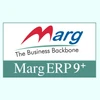What is Accounts Payable Invoice Processing and How it Works?

You might wonder why invoice processing holds such importance in Accounts Payable. After all, isn’t it just about paying received invoices?
But there’s more to it. Invoice processing isn’t just a critical part of Accounts Receivable; it plays a vital role in Accounts Payable, too, with several key factors that businesses need to manage effectively.
Take an example,
In the US, 55% of invoices are paid late, and only 36% are paid on time.

It means if making payments were so easy, then why are more than half of the invoices are getting paid late? Do you know this could lead to strained vendor relationships?
So, what’s behind this delay? Often, it’s not the lack of funds, but the lack of a streamlined AP invoicing process.
Thus, we’ll explore everything about AP invoice processing, like what it is, how it works, and why automation is becoming a new trend for finance teams everywhere.
What is AP Invoice Processing?
Accounts Payable (AP) invoice processing means the overall process how the AP team complete payment after they receive an invoice from its vendor.
It is important to understand, as it helps to manage the outward cash flow. This process involves many people from different departments at multiple levels of approval. Generally, the team has to approve two types of invoices, as explained below.
- Purchase Order-based invoices: These types of invoices need to be matched with the purchase order and the delivery receipt.
- Non-PO invoices: These invoices do not have the purchase order matching process. It makes these invoices a little difficult and more time-consuming to validate and approve as it involves the matching of all the items ordered.
Thus, AP invoice processing is about approving and paying the vendors before or till the due date. It helps both the vendors and the clients to keep the company’s financial data up-to-date and audit-ready.
Suggested Read: Accounts Receivable vs Accounts Payable
How AP Invoice Processing Works?

The Accounts Payable workflow includes six key stages explained below:
1. Receive an invoice
The first step is receiving an invoice from the vendor. You could receive it via mail, invoicing software, supplier portals, or electronic data interchange.
2. Data Entry and Record the details
In a manual setup, the AP team enters invoice details, such as invoice number, date, vendor name, and amount, into the company’s invoicing software. This step is critical but prone to human error, especially with high volumes of invoices.
3. Validate the invoice
- Next, the person who is responsible for validating the invoice will check it for accuracy. The steps involve:
- Verifying if the invoice matches the respective purchase order or not.
- Performing a 2-way match (invoice to PO) or a 3-way match (invoice, PO, and goods receipt).
- Confirm that everything mentioned in the invoice, like the price, quantities, and terms, is correct.
4. Approve the invoice
Once the invoice is validated, the invoice is moved to the approval department. Depending on company policy, there might be different levels of approval. In manual processes, this often involves printing and signing documents or emailing back and forth, which can cause delays.
But in AP invoice automation process, it’s a job of minutes; the person has to just click on the approve button.
5. Process Payment
Here comes the important part – Paying for the Invoice. After the invoice is approved, it is scheduled for payment based on vendor terms. You can make payments via check, bank transfer, or ACH. But it is important for the AP team to make payments on time to avoid late fees and maintain good relationships with the vendors.
6. Document the invoice
Finally, the invoice and payment records are stored for compliance and auditing purposes. Proper documentation is essential to support financial reporting and prepare for internal or external audits.
If you’re still handling AP invoice processing manually, it’s time to explore Accounts Payable software that automates and optimizes every stage of the workflow.
AP Invoice Automation vs Traditional Process

The difference between traditional and automated AP invoice processing is night and day. In a manual environment, invoices are received as paper documents or PDFs, and AP staff must physically handle, input, and route each one through email chains or printed approvals.
This not only slows down the process but also increases the risk of human error, duplicate payments, and missed deadlines.
In contrast, AP automation digitizes the whole workflow. From invoice capture to data extraction, matching, and approvals to payments, everything can be automated and save time. The system automatically matches an invoice with its respective purchase order and sends it to the right approvers.
This results in a good increase in productivity:

The average AP full-time employee (FTE) processes 6,082 invoices per year manually, compared to 23,333 invoices with full automation.
That’s nearly a 4x increase in efficiency! It gives more time to the AP teams and automates any repetitive tasks.
Why Choose LEAD Accounting Plus for AP Invoice Processing?
For businesses looking to streamline their Accounts Payable processes, LEAD Accounting Plus offers a robust solution to manage and automate invoice processing seamlessly. Here’s why it’s the right choice for AP teams:
- Automated Invoice Matching
LEAD Accounting Plus automates the entire AP invoice process, including automatic matching of invoices with purchase orders and goods receipts. This eliminates the manual work of matching documents and reduces the chances of errors and duplicate payments.
- Seamless Integration with Procurement
LEAD’s integration with procurement and inventory systems ensures that invoices are processed with up-to-date data, improving accuracy and reducing delays. This helps in avoiding errors and discrepancies that often arise during manual matching.
- Real-Time Tracking and Notifications
With LEAD Accounting Plus, AP teams can set up real-time tracking, reminders, and due date alerts to ensure timely approvals and payments. This reduces the risk of late payments, improves vendor relationships, and helps maintain compliance.
- Multi-Location Support
For businesses with multiple branches, LEAD offers centralized control over AP processes, ensuring consistency and streamlined operations across different locations. It supports a global business structure while keeping everything in one unified platform.
- Enhanced Financial Reporting
It provides detailed financial reports, offering complete visibility into the status of invoices, payments, and outstanding liabilities. This ensures better cash flow management, budgeting, and forecasting.
By leveraging LEAD Accounting Plus, businesses can improve efficiency, accuracy, and vendor relationships while minimizing late payments and compliance risks. The automation capabilities make AP invoice processing faster, reducing manual effort and allowing your AP team to focus on higher-value tasks.

Lead Accounting Plus
Starting Price
₹ 999.00 excl. GST
Key Points for Efficient AP Invoice Processing
Here we have shared a few key points you need to consider for an efficient AP invoice processing:
- Standardize the Invoice Intake Process: Centralize all invoice submissions through one channel to prevent lost or duplicate invoices. This could be an accounting software or an invoicing software.
- Implement Clear Approval Workflows: Do not just send the invoice for approval to any person available. Define each person in the software who approves what, based on department, to speed up processing.
- Use Real-Time Tracking and Alerts: Choose the centralized software that provides due date alerts also so that you never miss making a payment.
- Invest in Data Accuracy: 40% of AP teams cite slow invoice validation as a cause for late payments. It makes it important to invest in a good accounting software that automatically and precisely validates the invoice without any scope of errors. The faster the validation, the faster the payment process.
Suggested Read: Different Types of Accounts Payable
Benefits of Organized Invoicing Process in Accounts Payable
A well-managed invoicing process creates ripple effects throughout the business. Here are the key benefits:
- Faster Invoice Processing: When you have a clear, streamlined process, invoices move through the system more quickly. This reduces approval delays, shortens cycle times, and ensures vendors are paid on schedule.
- Improved Accuracy: If you are working manually, a structured process reduces human error. And if you are using an automation tool like LEAD Accounting Plus, you can automatically eliminate duplicate entries, mismatched data, and manual rework.
- Stronger Vendor Relationships: Vendors value timely payments. An organized AP process ensures fewer disputes and more trust between you and your vendors. It makes suppliers more likely to prioritize your business and offer you favorable terms.
- Better Compliance and Audit Readiness: An organized AP system helps you keep detailed records of invoice approvals, payments, and communications. This further makes audits faster and less stressful. It also helps in ensuring compliance with internal policies and external regulations.
- Enhanced Financial Visibility: Finance teams get clear insights into outstanding liabilities and cash flow when invoices are processed timely manner. This helps in better budgeting and forecasting.



Lead Accounting Plus
Starting Price
₹ 999.00 excl. GST
Conclusion
Accounts payable might not always be in the spotlight, but it greatly helps to maintain a company’s financial health. The world is digitalizing and still relying on manual invoice processing doesn’t make sense.
The good news? With a solid understanding of how AP invoice processing works and a few strategic changes, you can make your business’s cash flow better.
Whether that means making your current accounts payable workflow better or embracing automation through solutions like LEAD Accounting Plus, the impact can be huge:
- Faster processing
- Fewer errors
- Stronger vendor relationships
- Better control over cash flow
No matter where you are in your AP journey, now’s the time to take a closer look and start optimizing
Mehlika Bathla is a passionate content writer who turns complex tech ideas into simple words. For over 4 years in the tech industry, she has crafted helpful content like technical documentation, user guides, UX content, website content, social media copies, and SEO-driven blogs. She is highly skilled in... Read more




























